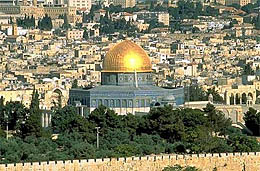
Archaeologists have unearthed another part of ancient Jerusalem
 |
The Israeli Antiquities Authority estimates that the five-meter-high wall was part of a two-story building destroyed in 70 AD, when Jerusalem was ravaged by the Romans, who destroyed the Second Jewish Temple built by King Herod.
"According to our findings, ancient Jerusalem was much larger than previously thought," said Doron Ben-Ami from the antiquities office at a press conference held near the archaeological site.
Ben-Ami speculates that the building might have been part of a palace belonging to the Mesopotamian queen Helena, who converted to Judaism in the first century AD, left her kingdom in present-day Iraq, and settled in Jerusalem.
The wall was discovered by archaeologists under a parking lot about 300 meters from the area that Jews call the Temple Mount and Muslims call Haram al-Sharif. "We know that the building was not destroyed by fire, but its stone walls were intentionally dismantled," said Ben-Ami. During the excavations, archaeologists found artifacts from the early Islamic, Byzantine, and Hellenistic periods, as well as from the First and Second Temple periods.
The English translation is powered by AI tool. Switch to Czech to view the original text source.
0 comments
add comment










